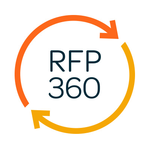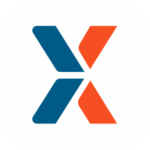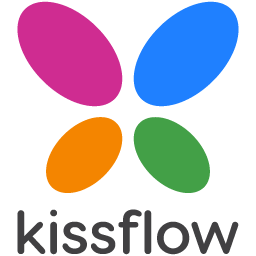Description

RFP360

TRADOGRAM
Comprehensive Overview: RFP360 vs TRADOGRAM
RFP360 Overview
a) Primary Functions and Target Markets:
-
Primary Functions: RFP360 offers a platform designed to simplify and streamline the process of creating, issuing, and evaluating Requests for Proposals (RFPs). The tool supports both buyers and suppliers, facilitating the management of RFPs, RFIs (Requests for Information), and RFQs (Requests for Quotations). It enables automation and centralizes data to improve decision-making, collaboration, and efficiency in the proposal process. Key features include response management, collaboration tools, template and content library, and advanced analytics.
-
Target Markets: RFP360 serves a wide range of industries, including government, healthcare, education, finance, and enterprise-level companies that frequently engage in procurement activities requiring RFPs. The platform is suitable for organizations of varying sizes that need to manage complex procurement processes efficiently.
b) Market Share and User Base:
RFP360 is a notable player in the proposal management software market but is more specialized compared to large-scale procurement solutions. Its user base consists primarily of organizations focused on optimizing their RFP and procurement processes, touching both SMEs and larger corporations. However, its market share is smaller relative to broader procurement and supply chain platforms.
c) Key Differentiating Factors:
-
Specialization in RFP Processes: RFP360 is uniquely focused on enhancing the RFP lifecycle, providing depth in features specifically tailored for RFP management, unlike more general procurement tools.
-
User-Friendly Interface: The platform emphasizes an intuitive user experience for both buyers and suppliers, reducing the learning curve and encouraging faster adoption.
-
Collaboration and Transparency: RFP360 facilitates enhanced collaboration among stakeholders and provides visibility throughout the process, ensuring clarity and accountability.
TRADOGRAM Overview
a) Primary Functions and Target Markets:
-
Primary Functions: TRADOGRAM offers a cloud-based procurement management solution that helps businesses manage purchasing activities. Its features include purchase order management, supplier management, expense tracking, budgeting, inventory management, and contract management. TRADOGRAM aims to improve cost control, enhance supplier relationships, and simplify the purchasing process.
-
Target Markets: TRADOGRAM targets SMEs and mid-sized companies across various industries, including manufacturing, construction, hospitality, and retail, particularly those looking to automate and optimize their procurement activities without the complexity of enterprise-grade solutions.
b) Market Share and User Base:
TRADOGRAM holds a modest market share within the procurement software industry, appealing mainly to organizations seeking an affordable, scalable solution for their purchasing operations. Its user base is diverse, representing smaller to mid-sized companies that benefit from its straightforward implementation and operational capabilities.
c) Key Differentiating Factors:
-
Comprehensive Procurement Solution: Unlike RFP360, which focuses on RFP management, TRADOGRAM offers a broader suite of procurement tools, catering to the overall purchasing workflow.
-
Cost-Effectiveness: TRADOGRAM is generally positioned as a cost-effective solution, making it attractive for SMEs seeking substantial functionality at a lower price point compared to some of the larger procurement suites.
-
Flexibility and Customization: TRADOGRAM offers a flexible platform that allows for customization according to an organization's specific procurement workflows and needs, accommodating various industries and unique business cases.
Comparison in Summary
While both RFP360 and TRADOGRAM focus on facilitating procurement processes, they cater to different needs within the procurement sphere. RFP360 specializes in RFP and proposal management, offering deep functionality in this area but does not cover the entire procurement cycle. TRADOGRAM, on the other hand, provides a comprehensive procurement management solution suitable for end-to-end purchasing activities. Consequently, the choice between the two depends on whether an organization prioritizes specialized RFP management or broader procurement oversight.
Contact Info

Year founded :
2012
+1 844-737-0365
Not Available
United States
http://www.linkedin.com/company/rfp365

Year founded :
2014
+1 844-328-9523
Not Available
Canada
http://www.linkedin.com/company/tradogram
Feature Similarity Breakdown: RFP360, TRADOGRAM
When analyzing RFP360 and TRADOGRAM, we can identify some shared and distinct aspects related to their core features, user interfaces, and unique offerings. Please note that this analysis is based on general information known about these tools up to October 2023, and specific implementations or updates could change over time.
a) Core Features in Common
Both RFP360 and TRADOGRAM provide solutions for procurement and vendor management. Here are some of the core features they have in common:
-
Centralized Procurement Management: Both platforms offer tools for managing and organizing procurement activities, including request for proposals (RFPs) and purchase orders.
-
Supplier Management: They provide features to manage supplier information, communication, and relationships effectively.
-
Collaboration Tools: Both solutions facilitate collaboration within teams and with external partners, allowing for better coordination and communication.
-
Tracking and Analytics: They offer capabilities to track procurement processes and analyze data for better decision-making.
-
Document Management: Both platforms have features for managing procurement-related documents and ensuring easy access and organization.
b) User Interface Comparison
The user interface (UI) of procurement software is critical as it affects usability and user adoption:
-
RFP360:
- Known for its clean and intuitive user interface, RFP360 aims to provide a seamless user experience with straightforward navigation.
- It focuses heavily on visualization tools for tracking RFP progress and responses, often using dashboards and progress bars.
-
TRADOGRAM:
- TRADOGRAM emphasizes flexibility and ease of use with a user-friendly design that adapts to various procurement processes.
- Its interface is designed to cater to both novice and experienced users, offering customization options that allow for a personalized user experience.
Overall, both platforms aim for simplicity and efficiency, but their specific design choices and layout may appeal to different types of organizations based on their procurement needs and user preferences.
c) Unique Features
Each solution has unique features that may set it apart from the other:
-
RFP360:
- End-to-End RFP Management: It provides comprehensive tools specifically tailored for managing RFP processes from creation to evaluation to awarding.
- AI-Powered Response Tools: It offers AI-driven features to assist in drafting responses and evaluating vendor proposals, which can significantly speed up the RFP process.
-
TRADOGRAM:
- Budget Management: TRADOGRAM includes robust features for managing and tracking budgets, offering financial insights that can be crucial for cost management.
- Custom Approval Workflows: It allows organizations to create custom workflows to suit specific procurement policies and improve efficiency and accountability.
In conclusion, while RFP360 and TRADOGRAM share several core features, their differences lie in their unique capabilities and user interface designs. RFP360 excels in RFP-specific tools and AI assistance, whereas TRADOGRAM provides extensive budget control and workflow customization options. Organizations should consider these factors when choosing the tool that best meets their procurement needs.
Features

Proposal Management
Vendor Management
Performance Analytics

Procurement Management
User Collaboration
Cost Control
Compliance and Risk Management
Reporting and Analytics
Best Fit Use Cases: RFP360, TRADOGRAM
RFP360 and TRADOGRAM are both procurement and supplier management solutions, but they cater to different needs and scenarios. Here's how they fit into various use cases and industries:
RFP360
a) Best Fit Use Cases for RFP360:
- Types of Businesses or Projects:
- Large Enterprises and Corporations: RFP360 is ideal for large organizations with complex procurement needs that require robust Request for Proposal (RFP), Request for Information (RFI), and Request for Quote (RFQ) processes. It is particularly useful for businesses that need to manage multiple stakeholders and require detailed proposals from potential suppliers.
- Government and Public Sector: Entities that adhere to stringent regulatory requirements for transparency and fairness in procurement processes find RFP360 beneficial. Its features support compliance and detailed documentation, which are crucial in the public sector.
- Healthcare and Education: Industries with complex procurement cycles and the need for detailed supplier evaluation benefit from RFP360's functionality, which helps streamline these processes and manage detailed documentation.
d) Industry Verticals and Company Sizes:
- Industry Verticals: RFP360 serves sectors where detailed project specifications and extensive supplier evaluation are critical, such as aerospace, construction, healthcare, and government.
- Company Size: While suitable for organizations of any size, RFP360 particularly serves medium to large enterprises due to its robust feature set that caters to extensive procurement teams and complex RFP processes.
TRADOGRAM
b) Preferred Scenarios for TRADOGRAM:
- Scenarios:
- Small to Medium-Sized Enterprises (SMEs): TRADOGRAM is tailored for smaller businesses that require affordable procurement solutions with a straightforward implementation process. It offers essential features without the complexity that larger enterprises might require.
- Cost-Sensitive Environments: Companies that prioritize cost-effective procurement solutions will find TRADOGRAM appealing. Its straightforward pricing and flexible plans cater to businesses looking to manage their spend without high software costs.
- Organizations with Simple Procurement Needs: Businesses that do not need extensive RFP functionalities but require efficient purchase order management, supplier performance tracking, and basic inventory management provisions.
d) Industry Verticals and Company Sizes:
- Industry Verticals: TRADOGRAM caters to a wide range of industries, including retail, hospitality, and manufacturing, where procurement needs are continuous but not overly complex.
- Company Size: Targeted more towards small to medium-sized businesses, TRADOGRAM offers a flexible approach to procurement without the intricacies demanded by larger enterprises.
In summary, RFP360 and TRADOGRAM serve different market segments. RFP360 is ideal for large organizations needing comprehensive RFP management, while TRADOGRAM is suitable for SMEs seeking straightforward, cost-effective procurement management. Each product caters to specific industry needs based on complexity and size of the organization.
Pricing

Pricing Not Available

Pricing Not Available
Metrics History
Metrics History
Comparing teamSize across companies
Conclusion & Final Verdict: RFP360 vs TRADOGRAM
When comparing RFP360 and Tradogram, a detailed assessment of each solution's features, pricing, user experience, and support should guide the decision-making process. Here is a conclusion and final verdict:
Conclusion and Final Verdict
Overall Value:
-
RFP360: This product excels in the RFP (Request for Proposal) management space. It provides comprehensive tools for creating, managing, and evaluating RFPs, RFIs (Request for Information), and RFQs (Request for Quotation). It offers robust collaboration features and analytics, making it ideal for organizations heavily reliant on these processes.
-
Tradogram: Aimed more squarely at procurement processes, Tradogram provides a broader suite encompassing purchase order management, supplier management, and spend analysis. For organizations seeking a complete procurement solution with an emphasis on cost management and supplier relationships, Tradogram may offer better value.
Best Overall Value: The product offering the best overall value depends on your organization's specific needs. RFP360 is better suited for organizations focused on optimizing their RFP processes and collaboration. On the other hand, Tradogram offers better value for those looking for a comprehensive procurement management solution.
Pros and Cons of Choosing Each Product
RFP360:
-
Pros:
- Specialized focus on RFP processes, ensuring best-in-class functionality.
- Strong collaboration tools enhance teamwork and communication.
- Detailed analytics and reporting support informed decision-making.
-
Cons:
- Limited coverage of general procurement processes compared to Tradogram.
- Potentially higher costs if additional procurement functionalities are needed.
Tradogram:
-
Pros:
- Comprehensive procurement management features, including purchase orders and supplier management.
- Cost-effective for organizations looking to streamline diverse procurement activities.
- Flexible pricing and scalable for small to mid-sized businesses.
-
Cons:
- May not provide the deep RFP-specific functionalities that RFP360 offers.
- User experience might be less intuitive for those solely focused on RFP processes.
Recommendations for Users
-
Focus on Needs: Identify the core needs of your organization. If your primary goal is to enhance and streamline RFP processes, RFP360 is likely the better choice. Conversely, if a broader procurement management tool is necessary, Tradogram may be more suitable.
-
Integration Considerations: Consider how each solution will integrate with your existing technologies and workflows. This integration can significantly affect the overall value and efficiency gain from the software.
-
Scalability and Flexibility: Assess the scalability of each platform. Tradogram's scalability can be beneficial for growing businesses with expanding procurement needs, whereas RFP360 might be preferred for stable, established organizations that primarily seek RFP solutions.
-
Trial and Feedback: Take advantage of free trials or demos offered by both platforms. Engage team members who will frequently use the software and gather feedback on usability and satisfaction before making a final decision.
Ultimately, understanding your organization's current priorities and future growth plans will be essential in determining whether RFP360 or Tradogram offers the best overall value.
Add to compare
Add similar companies



